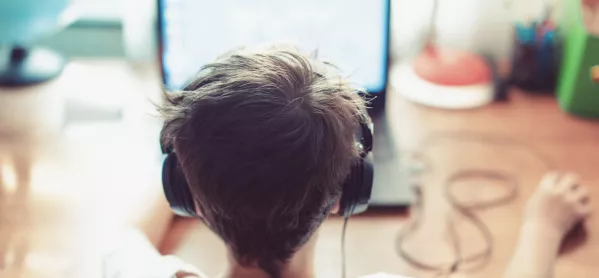- Home
- 4 reasons pre-recorded lessons are your best option
4 reasons pre-recorded lessons are your best option

Schools in many countries around the world are now closed, and no one knows for how long.
Students’ lives are in turmoil and teachers are looking for ways to plug the gaps - to reach out, support and continue to help young people to learn.
My British international school in Oman was shut down on Sunday 15 March for at least a month and we are now into week two, with more plans and initiatives being introduced on a daily basis.
Obviously the closure immediately led to a lot of questions from our school community. One of the most frequent from parents and some colleagues was, “Why are we not video conferencing directly into students homes?”
To help decide what we would do, I took soundings from other schools - notably Brian Cooklin, the head at Nord Anglia International School in Hong Kong - and did my own research on Twitter:
Moving learning online for your students or already done so? Poll question: Are you using/going to use live video calling into your students homes? (Skype, Zoom, Meet)”
- Kai Vacher (@PrincipalMuscat) March 20, 2020
As you can see, it’s clear there is divided opinion among schools as to whether or not to use online video, meaning there is no clear path for teaching staff or parents as to what is best practice.
In light of this, my colleagues and I have decided we are not going to use live video lessons, for four main reasons.
1. It’s not how we teach
We don’t normally talk to students for hours at a time - that’s not how we teach in 2020 at British School Muscat.
However, many parents may have been taught like this and do not realise pedagogy in many schools has changed in the intervening years, to be more inclusive and participatory.
Added to this is that it is unsustainable for the teachers: particularly as some parents may expect a continual live feed.
We believe that active learning is much better than passive, and we always aim to implement an interactive style. Trying to teach via a video link supports a more didactic approach to education that is not in line with our vision for teaching and learning.
2. To safeguard
Two-way video conferencing brings the potential for inappropriate behaviour or allegations, whether this is teaching a whole class of 20 plus students, smaller groups or 1:1 teacher and student tutorials or consultations.
Hacking into student and teacher sessions is also possible during live video conferencing using some platforms. And staff or students may witness unsuitable activity or dress, causing upset or distress, complaints and allegations. These are concerns that have to be taken seriously.
3. Behaviour management
It is difficult to manage a class of 20-plus students when they are all live on video but not in the same room as each other.
The lack of available ways for the teacher to control and manage inappropriate behaviour, other than shutting down, is a big concern and is fraught with difficulty, and one with potentially far-reaching impact when normality returns.
4. Engagement of all
Some students are naturally not as willing to engage due to shyness or embarrassment. We need to try to be fair to all and a live video lesson environment does not provide a level playing field.
5. Pre-record is key
Of course, though, given the challenges of remote teaching, none of this is to say we won’t be using video - it’s just that we are focusing on recorded teacher videos.
These can be very effective and don’t present the same problems identified above. We know from our efforts since we started supporting remote learning last Sunday that the vast majority of our students appreciate the video sessions - it helps them to feel part of something real: their school community.
We’re helping some of our teachers to make and upload better videos for the G-Suite platform: a few had only limited experience and wanted to improve their skills. This has produced real results and will benefit our teaching forever.
Our quality videos to support subjects including PE, Drama, Music, Maths, English and PSHE. Also, stories for the younger students have gone down a storm.
The social interaction part of school, such a vital ingredient, cannot be replaced by video or online, but we can take a path that leads to its door. It helps and the feedback has inspired all our teachers to do more.
What comes next?
None of this is to say we are not continually looking at how we can use live video lessons, such as whether it would be appropriate for specific cases where a student, for example, would benefit from 1:1 video sessions with a trained school counsellor or has specific learning or emotional needs.
I know other schools have implemented strategies and protocols that can help manage the concerns that I have outlined above and those for special cases. It would help our educational community to open up this debate and get some ideas and feedback.
It seems we will have several weeks to refine our teaching methods so let’s work together to find the optimum ways forward.
Kai Vacher is principal of the British School Muscat in Oman
Keep reading for just £1 per month
You've reached your limit of free articles this month. Subscribe for £1 per month for three months and get:
- Unlimited access to all Tes magazine content
- Exclusive subscriber-only stories
- Award-winning email newsletters



